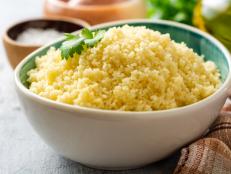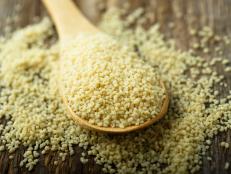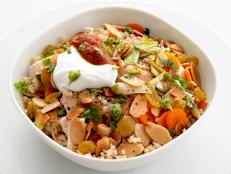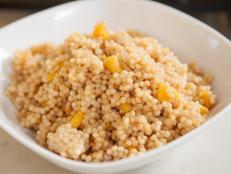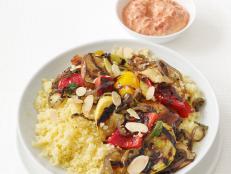Couscous: Is It Healthy?

Lilyana Vynogradova
This Mediterranean staple has become a popular side dish. But should couscous be making a regular appearance on your plate?
Not technically a grain, this combination of semolina wheat and water is actually more like pasta. There are several types of couscous, including the large Israeli couscous (aka pearled couscous) and the small Moroccan couscous (about 3 times the size of cornmeal).
One cup of cooked Moroccan couscous has 176 calories, 36 grams of carbohydrates, 2 grams of fiber and 6 grams of protein. It's sugar- and fat-free and contains about 66% of the recommended daily dose of selenium.
Whole wheat couscous is more nutritious that the regular variety. It's made from whole wheat durum flour. It contains 5 to 6 grams of fiber per serving, which can help you meet the recommended daily amount of fiber.
Couscous has a mild flavor which makes it extremely versatile. It works well with different flavors, both sweet and savory.
No?
Couscous lacks the variety of nutrients found in true whole grains like farro, brown rice, bulgur, and amaranth. If you eat it regularly instead of whole grains you could be missing out on some important nutrients. In addition, if you don't keep track of portions or add large portions of high-calorie ingredients (like dried fruit, oil and nuts) you can easily rack up calories.
Couscous also has a higher glycemic index than other whole grains, weighing in at 65, while brown rice has a GI of 50 and bulgur 48. Diabetics may be better off choosing lower glycemic index foods to help maintain better blood sugar control.
The Verdict: Couscous can absolutely be part of a healthy eating plan but it shouldn't take the place of true whole grains. Including a variety of grains will help ensure that you’re getting in all your essential nutrients.
Varieties to Try
Toby Amidor, MS, RD, CDN, is a registered dietitian and consultant who specializes in food safety and culinary nutrition. See Toby's full bio »



























